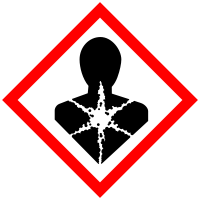
Photo from wikipedia
Di‐(2‐ethylhexyl) phthalate (DEHP) is one of the most commonly used plasticizers, and it is widely applied in various plastic products. DEHP is an endocrine‐disrupting chemical (EDC) that has been shown… Click to show full abstract
Di‐(2‐ethylhexyl) phthalate (DEHP) is one of the most commonly used plasticizers, and it is widely applied in various plastic products. DEHP is an endocrine‐disrupting chemical (EDC) that has been shown to disrupt the function of reproductive system in females. Although many studies have shown that DEHP potentially causes female reproductive toxicity, including depletion of the primordial follicle and decreased sex hormone production, the specific mechanisms by which DEHP affects female reproduction remain unknown. In recent years, research focused on the intestinal flora has provided an idea to eliminate our confusion, and gut bacterial dysbiosis may contribute to female reproductive toxicity. In the present study, the feces of DEHP‐exposed mice were collected and analyzed using 16S rRNA amplicon sequencing and untargeted global metabolite profiling of metabolomics. DEHP obviously causes reproductive toxicity, including the ovarian organ coefficient, estradiol level, histological features of the ovary and estrus. Furthermore, DEHP exposure alters the structure of the intestinal microbiota community and fecal metabolite profile in mice, suggesting that the reproductive toxicity may be caused by gut bacterial dysbiosis and altered metabolites, such as changes in the levels of short‐chain fatty acid (SCFA). Additionally, it is well known that changes in gut microbiota and fecal metabolites cause inflammation and tissue oxidative stress, expectedly, we found oxidative stress in the ovary and systemic inflammation in DEHP exposed mice. Thus, based on our findings, DEHP exposure may cause gut bacterial dysbiosis and altered metabolite profiles, particularly SCFA profiles, leading to oxidative stress in the ovary and systemic inflammation to ultimately induce female reproductive toxicity.
Journal Title: Environmental Toxicology
Year Published: 2021
Link to full text (if available)
Share on Social Media: Sign Up to like & get
recommendations!